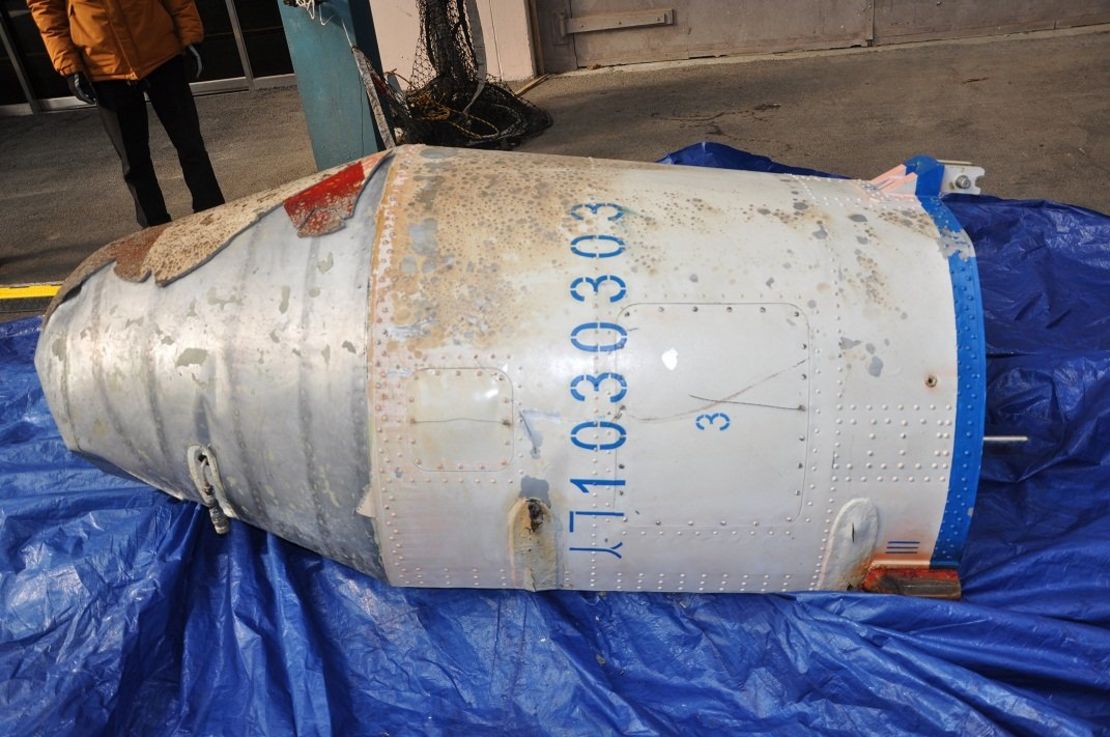Story highlights
North Korea has threatened to launch an intercontinental ballistic missile "at any time"
Pyongyang has never successfully tested such technology before
While the US has said it would shoot down any North Korean missile that posed a threat, don’t expect to see Pyongyang’s next launch blasted out of the sky.
US Defense Secretary Ash Carter said on January 9 that if launches do not pose a risk to the US or an ally, “it may be more to our advantage… to gather intelligence from the flight.”
In his new year’s address, North Korean dictator Kim Jong Un said the country had “entered the final stages of preparation for the test launch” of an intercontinental ballistic missile (ICBM) that could threaten the US mainland.
In early January, Pyongyang upped the threat, saying it could launch such a missile “at any time and anywhere.”
Intelligence gathering
The US and other observers “can learn a lot” from any missile test, said Tal Inbar, a North Korea expert at the Fisher Institute for Air and Space Strategic Studies.
“We can analyze the trajectory and conclude some insight about the power of the engines and the amount of fuel, and estimate the potential range of the missile.”
If it is possible to retrieve the missile or rocket from the sea, as South Korea did in February last year, Inbar said there “is a wealth of intelligence in such debris.”
He added that it was generally unwise to shoot down any missile that does not pose a threat as not only would you lose the ability to examine the missile and its flight, “if you try and shoot it down and miss, that’s a huge PR embarrassment.”

Long road to ICBMs
Despite repeated claims about its capability to strike at the US mainland, North Korea has never successfully tested an ICBM, and experts have cast doubt on how close Pyongyang is to having the technology to even attempt it.
Even the country’s mid-range missile – the Musudan – “barely works,” according to aerospace and rocket expert John Schilling, “exploding in seven out of eight tests so far.”
Pyongyang’s purported ICBMs, Schilling wrote in a report in December, “don’t exist, except as parade mock-ups and engineering test articles.”
“When they are completed, they will require years of flight testing to reach operational status, with no doubt many more catastrophic failures,” he said.
Inbar disagreed, saying all the evidence points to the country’s ICBMs being “real missiles and a real threat.”
“But the question remains of what would be the reliability of a missile that has never flown before,” he said.
He added that Pyongyang may be loathe to test such a missile as doing so would deplete its arsenal of a weapon that is complex and expensive to build.
According to North Korean state media, the country last year successfully tested engines for launching ICBMs, including a solid-fuel rocket engine that would allow a missile to be launched quickly with little forewarning.
It has also carried out multiple submarine-launched ballistic missile (SLBM) tests and, according to US intelligence, “probably” possesses the capability to miniaturize a nuclear warhead for placing on an ICBM.
Space tech
Experts say North Korea has been using its space program – which Pyongyang claims is peaceful – to covertly test this technology.
In February 2016, the North said it successfully launched a satellite into space, but a senior US defense official told CNN the satellite was “tumbling in orbit” and “incapable of functioning in any useful way.”
According to a report by the Arms Control Association, all North Korean satellite launches have used rockets that “employed low-thrust engines in the upper stages, which would not provide sufficient power if the rocket were to fly on a ballistic missile trajectory.”
Like Schilling, the report cast doubts on the viability of North Korea’s ICBM technology, pointing out that of the two missiles shown off in public “neither has been flight-tested, and North Korea has not developed and tested a re-entry vehicle capable of withstanding the thermal and mechanical rigors of re-entry into the atmosphere at ICBM velocities.”

Other threats
While North Korea may not be on the verge of launching an ICBM, this does not mean Pyongyang isn’t capable of causing absolute devastation. The country has a growing nuclear stockpile, as well as up to 5,000 metric tons of chemical weapons, according to the Nuclear Threat Initiative (NTI).
Last year saw a marked uptick in mid-range missile tests, of the type that could strike Tokyo or Seoul, home to a combined 23 million people, as well as tens of thousands of US troops.
While Washington and Seoul are working to deploy the Terminal High Altitude Area Defense system (THAAD) in South Korea, its future under a Donald Trump presidency is uncertain.
Jeffrey Lewis, director of the US-based East Asia Nonproliferation Program, told CNN last year that North Korean simultaneous missile testing seemed to indicate it was trying to find a way to bypass THAAD’s defenses.
Developments in Pyongyang’s SLBM systems also pose a threat to its neighbors, as missiles launched from underwater are far harder to detect.
While the danger posed by ICBMs may be overstated, North Korea’s conventional and nuclear threat to its neighbors is profound, and may be why Trump is left with few options other than sitting down with Kim Jong Un.
If North Korea is hoping for just such a meeting, as some analysts have argued, Inbar said it is “logical to assume” that Kim will want to test an ICBM as soon as possible.
“What he will put on the table will be the basis for the negotiations, (so Kim) has to show his cards,” he said. “If he is ready from a technical point of view, I would expect to see a launch soon.”


